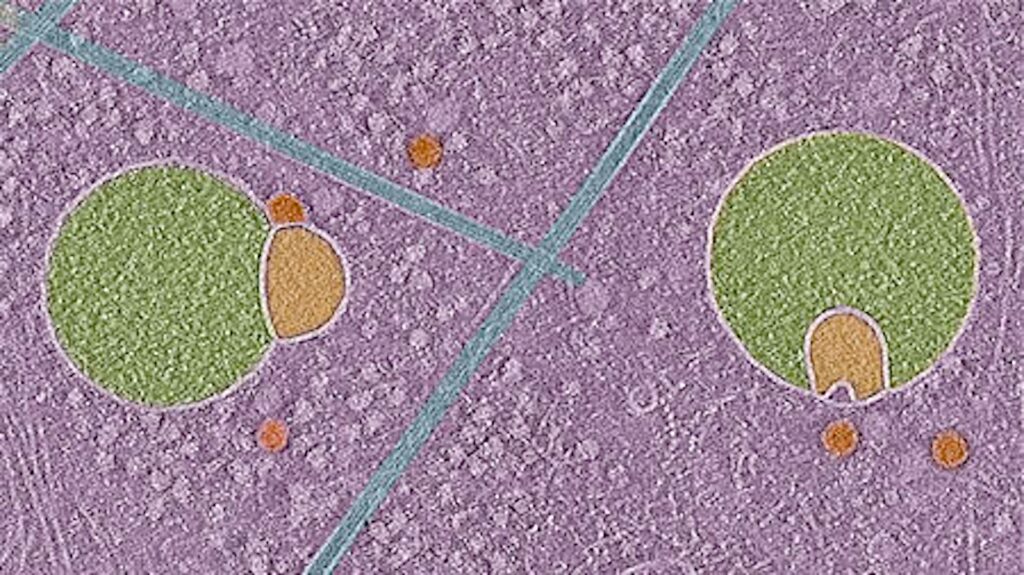
A groundbreaking discovery has emerged from the University of Virginia, where scientists have identified a new organelle within human cells, dubbed the “hemifusome.” This revelation, published in the journal Nature Communications, could redefine our understanding of cellular recycling processes.
The discovery was made by Seham Ebrahim, an assistant professor at the University of Virginia, and her team while observing cell filaments. The hemifusome, which resembles a “snowman wearing a scarf,” may play a crucial role in sorting, recycling, and discarding proteins within cells. This organelle, measuring approximately 100 nanometers in diameter, is significantly smaller than a mitochondrion, the well-known powerhouse of the cell.
The Discovery Process
The hemifusomes were observed using cryo-electron tomography (cryo-ET), a technique that rapidly freezes cells to preserve their structures, allowing for detailed 3D imaging. “It’s like a snapshot in time without any kind of chemical or any kind of stain,” Ebrahim explained. This method enabled the team to view cells in a “very native state,” akin to looking inside a glass ball.
In their research, the team noted that traditional imaging techniques might have overlooked hemifusomes due to their small size and the harsh processing steps involved. These factors likely rendered the organelles invisible or mere blurs in previous studies.
Significance of Hemifusomes
The hemifusome’s discovery is not just a visual breakthrough but also a conceptual one. Ebrahim and her colleagues observed a configuration of vesicles they had never seen before, with two vesicles fused together by a two-layer fat barrier. This configuration was previously theorized but had never been observed in living cells.
“Even from a biophysics perspective, it’s a breakthrough,” Ebrahim stated. “This was the first time that it has actually been seen in a living cell.”
Yi-Wei Chang, an assistant professor at the University of Pennsylvania Perelman School of Medicine, who was not involved in the study, noted that the hemifusomes appear to be genuine cellular intermediates rather than artifacts of the imaging process.
Potential Implications and Future Research
While the existence of hemifusomes is confirmed, their exact role and function remain to be fully understood. Ebrahim hypothesizes that these organelles could be precursors to specific vesicles, potentially playing a critical role in the recycling or disposal of cellular membranes. This function is vital for preventing the accumulation of materials that could disrupt cellular operations.
Understanding hemifusomes may also provide insights into diseases like Alzheimer’s, which is associated with the improper clearance of protein plaques in the brain. “Without cryo-electron tomography, we would have missed this discovery,” Ebrahim emphasized, suggesting that this technique could lead to further revelations in cellular biology.
Looking Ahead
The discovery of hemifusomes opens new avenues for research into cellular processes and disease mechanisms. As scientists continue to explore these organelles, they may uncover new pathways for therapeutic interventions, particularly in neurodegenerative diseases.
This development highlights the importance of advancing imaging technologies and their potential to unveil previously hidden aspects of cellular biology. As research progresses, the hemifusome may become a key player in our understanding of cellular function and disease.







